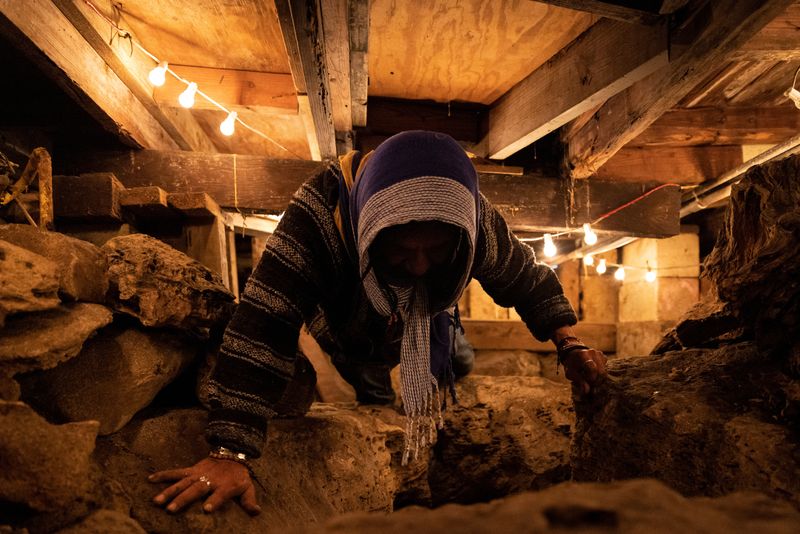As Miami high-rises loom over financial district, local resident digs in
3/3

FILE PHOTO: Ishmael Bermudez, an amateur archeologist, crawls on the bedrock that he exposed after digging under his house in the Brickell neighborhood in Miami, Florida, U.S., February 13, 2023. REUTERS/Marco Bello
2/3
By Maria Alejandra Cardona
MIAMI (Reuters) – As developers seek to build up Miami’s skyline, long-time resident Ishmael Bermudez is digging in – literally.
The artist and amateur archeologist lives in a single-family home in Brickell, a rare property in Miami’s financial district. Bermudez, alongside community groups and professional archeologists, is pushing for more preservation in Miami as new developments unearth historical relics.
“It’s up to us, the people, to make sure that this don’t get destroyed,” said Bermudez. Developers cannot “come here and intimidate us with their money – they have to work with us,” he said.
Bermudez’s home in Brickell, just south of downtown Miami, is painted with a multicolored seascape of fish and underwater plants. Tropical birds sing in his garden, an uncommon sound in the fast-growing neighborhood dominated by the floor-to-ceiling glass of high-rise developments.
After excavating under his home, Bermudez discovered fossils – and even human remains, which were given to local authorities.
Earlier this month, community members called for building work to be postponed at 444 Brickell Avenue so that archeologists could preserve prehistoric artifacts found there, including bones, pottery and tools.
Related Group, the real estate developer, did not respond to requests for comment. The City of Miami’s Historic and Environmental Preservation Board did not respond to a request for comment.
Modern-day Brickell, which sits near the mouth of the Miami River, was once the site of a vibrant settlement called Tequesta, according to William Pestle, an archeology professor at the University of Miami. Spanish explorers encountered Tequesta in the 16th century, yet its history is not widely known.
“Something old by Miami standards is from the 1970s or the 1960s – you don’t see the history of the city presented” as it is in Boston, New York or Philadelphia, Pestle said. “As a consequence of that, we come to think that there is no history.”








